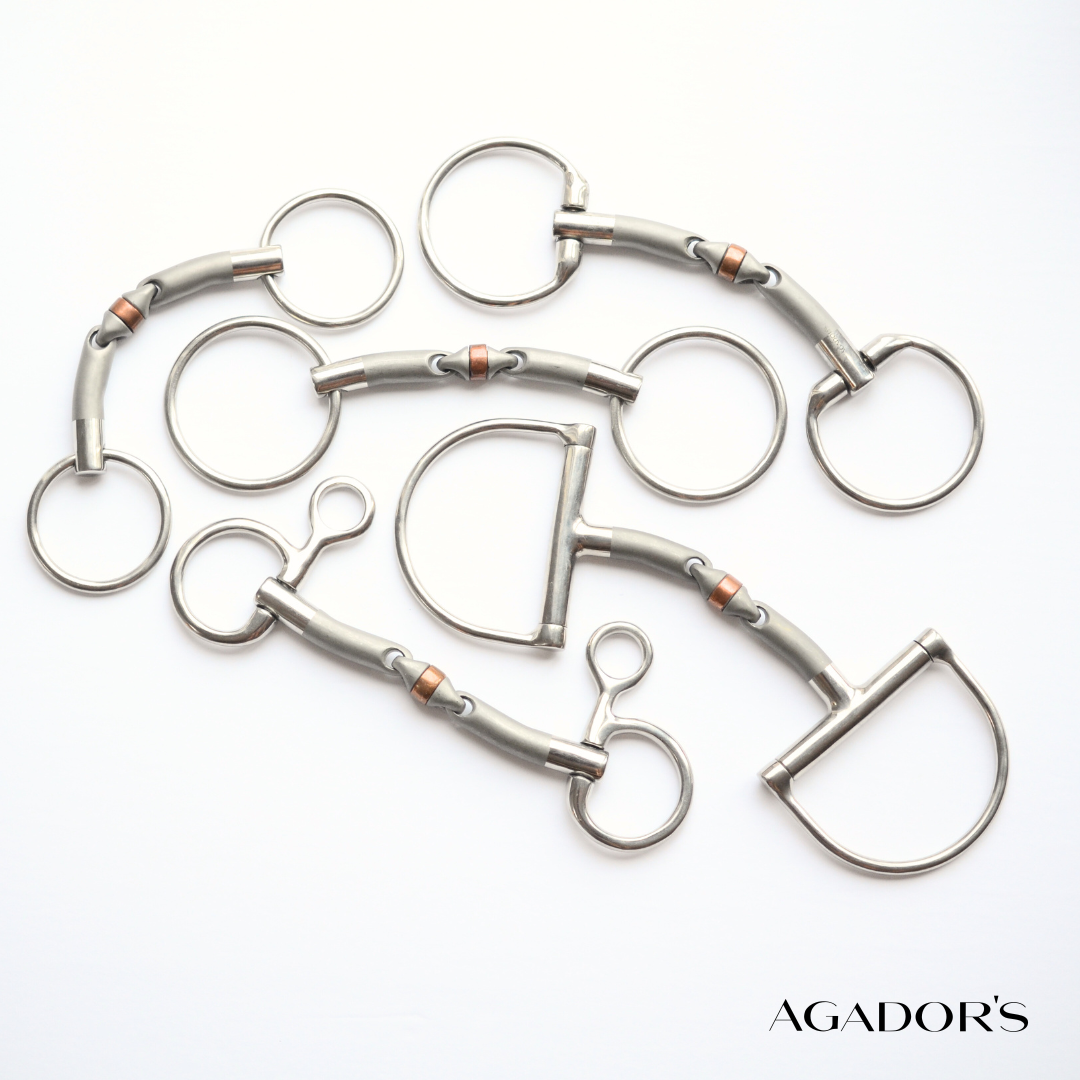
Is your Smoothride bit placed correctly?
When fitting a SmoothRide bit for your horse, it’s important to understand that these bits—including Dees, Eggbutts, Full Cheeks, Elevators, and Loose Rings—are designed to be worn in two different orientations.
Each position offers a distinct action, and experimenting with both can help determine which works best for your horse. Below, we’ll explain the two configurations and how each affects the pressure and comfort of the horse.
Orientation 1: Pressure on Bars and Tongue
- How to Fit: Keep the letter A printed on the right side of the horse. The tip of A should point towards the nostrils, with the Agador's brand positioned on the bottom right.
-
Effect:
- In this orientation, the bit applies more pressure on the bars and creates a squeezing effect on the tongue.
- This position is often used for horses that respond better to a more engaged feel, as it offers a more defined signal.

Orientation 2: Mild Tongue Relief
- How to Fit: Turn the bit so the tip of A points towards the saddle, with the Agador's brand facing up on the right side.
-
Effect:
- This setup provides mild tongue relief by curving away from the bars, which many horses prefer for comfort.
- It also positions the bit closer to the pre-molars, increasing lip pressure. This can be beneficial for horses that do not grab the bit, but it may not suit horses with low-set premolars who tend to chew or pull on the bit.

Finding the Right Fit
Because each horse is unique, it’s important to try both configurations to observe how your horse reacts. A simple swap mid-ride can reveal if one orientation encourages better relaxation and responsiveness. Keep in mind that subtle changes in fit can make a big difference in your horse’s performance and comfort.
Pro Tip: If your horse tends to grab the bit or resists contact, starting with the first orientation (A pointing to nostrils) might yield better results. Conversely, if your horse seems sensitive to tongue pressure, try the second orientation (A pointing towards saddle) for a softer feel.
Experimenting with these adjustments will help you fine-tune your horse’s experience and achieve better communication through the reins.


